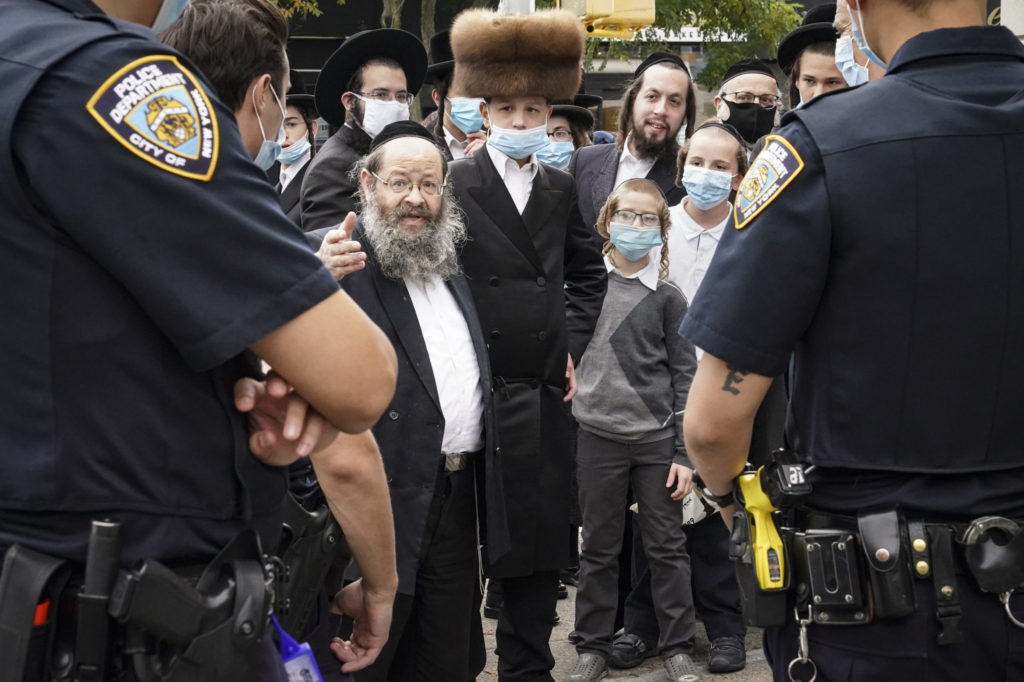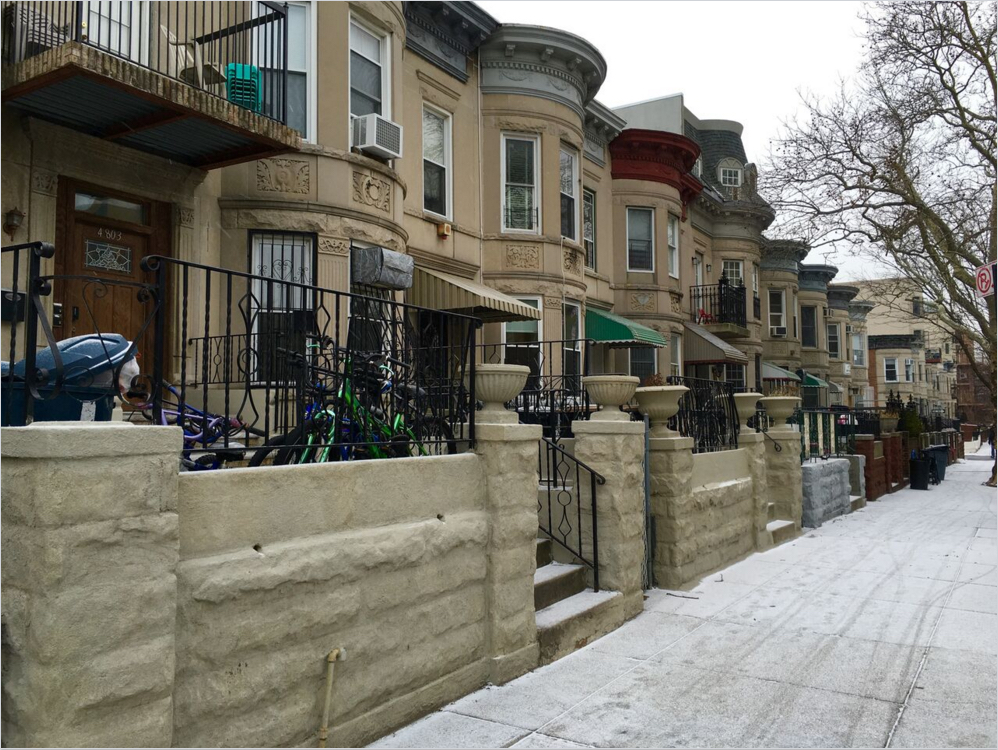Second night of Borough Park protests erupts amid COVID crackdown

Members of the Jewish Orthodox community spoke with NYPD officers on a street corner in Borough Park on Wednesday. Photo: John Minchillo/AP
Crowds of Orthodox Jewish men returned to Brooklyn streets on Wednesday night in New York City neighborhoods facing new coronavirus shutdowns, with protesters saying the state is unfairly targeting Orthodox Jewish communities as it tries to stamp out hot spots before they spread.
Protests first erupted in Borough Park Tuesday night after Gov. Andrew Cuomo announced the new restrictions on schools, businesses and houses of worship in some parts of the city and state.
On Wednesday, some giant flags proclaiming support for President Donald Trump could also be seen in the crowd as police officers watched, according to social media video.
